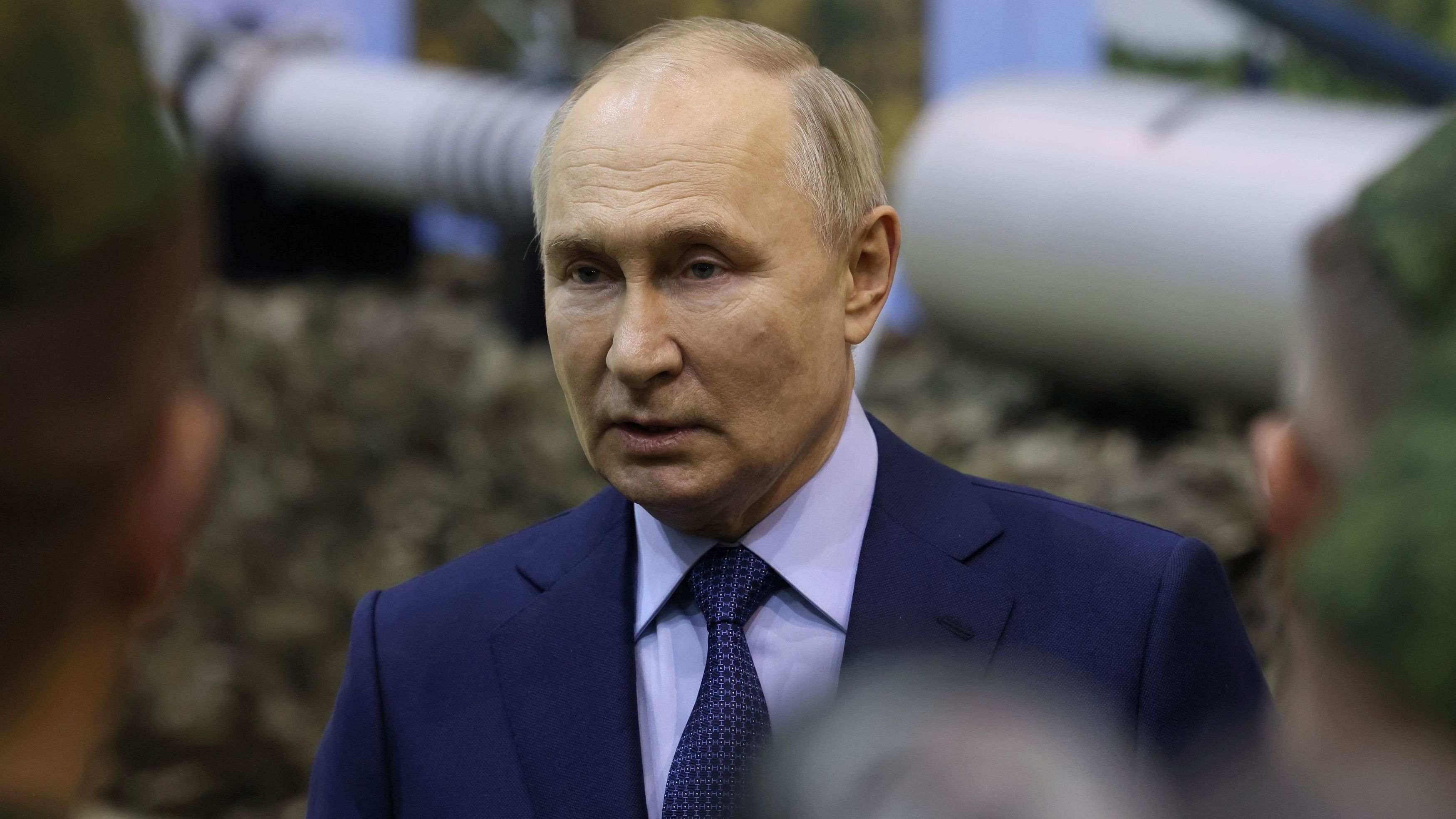
Russian President Vladimir Putin.
Credit: Reuters Photo
By James Stavridis
Throughout Russia’s history, tsars looked for ways to dominate what they called the “near abroad” of their sprawling empire. In today’s world, President Vladimir Putin’s illegal invasion of neighboring Ukraine follows that strategic arc.
If he is victorious, it is logical he would turn his attentions to Moldova, the next stop on the road to Eastern Europe — and where a Russian separatist enclave, Transnistria, already is occupied by Russia.
But there is another very attractive target nearby: the western Balkans. The turbulent stretch of territory to the southeast of Europe includes four stable North Atlantic Treaty Organisation members: Croatia, Albania, Montenegro and North Macedonia.
But the Kremlin has its eyes on other prizes: Serbia, Kosovo and the ethnically divided nation of Bosnia and Herzegovina. How might Putin seek to extend Russian influence and undermine North Atlantic Treaty Organisation and European Union engagement in this important corner of Europe?
I know this terrain well from my days at NATO and as overall US military commander in Europe. Before that, I served in the Balkan wars of the 1990s as captain of a destroyer off the coast of Serbia, enforcing an arms blockade against its aggressive regime.
Over the years, I’ve met most of the senior leaders in the region, including Serbian President Aleksandar Vucic, former Croatian president Kalinda Grabar-Kitarovic, and Milorad Dodik, current leader of Respublika Srpska (the ethnic Serbian portion of Bosnia).
In the wake of the breakup of Yugoslavia, the incredibly bloody Balkan wars between 1991 to 2001 killed hundreds of thousands of civilians (8,000 Muslim men and boys, for example, were massacred at Srebrenica in July 1995).
Tensions remain between Roman Catholics in Croatia, Orthodox Christians mostly in Serbia, and Muslims in Albania, Kosovo and Bosnia.
Putin is seeking to capitalise on this unfinished history. He knows that if NATO member states are dragged back into policing a restive Balkans, they will be distracted from their focus on supporting Ukraine.
There are still several thousand NATO peacekeepers in Kosovo, a former region of Serbia that neither the Serbs nor the Russians recognize as an independent nation.
Last year, the Serbian military went to high alert after rioting by ethnic Serb protestors inside Kosovo injured nearly 100 NATO soldiers; this forced the alliance to send in several hundred additional peacekeepers.
Putin is clearly encouraging Serbia to put pressure on the NATO-supported government of Kosovo.
He is also working to destabilise the shaky government of Bosnia-Herzegovina, which is divided into an odd tripartite presidency with one representative of each of the three major ethno-religious constituencies.
The most experienced political actor is Dodik, who is closely aligned with Moscow. Even a decade ago, he was telling me about the need for Republika Srpska to secede, which would effectively destroy the country.
His rump portion would then align with Serbia itself, creating a greater Serbian state, which Putin would happily endorse.
As retired Rear Admiral Mark Montgomery, who was my plans officer at US European Command, has said, “This is the same type of challenge we dealt with a decade ago — Putin benefits from stirring the pot elsewhere in Europe, attempting to weaken NATO credibility and distract us from supporting Ukraine.”
Fortunately, the West has options. For the moment, the idea of deploying NATO battalions to Ukraine is unlikely. Thus increasing the level of troops deployed to Kosovo now, and getting ahead of the unrest Putin is trying to foment, is possible and makes strategic sense.
Doing so would be an example of an effective regional division of effort within the alliance: NATO countries in the Balkans and nearby (e.g., Greece and Italy) can focus on that region.
Eastern European and Nordic members can lead in the Ukraine effort. The big countries to the west — France, Germany, the UK and the US — have sufficient resources to be involved in both.
Alongside stabilisation forces, NATO must be mindful of Russia’s use of so-called hybrid warfare. Putin is good at using social media, misinformation campaigns and pro-Russian propaganda to create tensions outside his borders.
NATO must use its own information networks to expose and counter these false narratives. If the Russians decide to up the ante, they may use cyberattacks against power grids and other vital targets in Kosovo and the non-Serbian parts of Bosnia.
This would create confusion and increase social discontent. NATO can provide better cyber defense systems to Balkan allies and friends.
Finally, there are economic incentives that can counter Russian engagement. Serbia desperately wants membership in the EU, as does Bosnia-Herzegovina.
Their leaders want to be able to engage with the West and avoid sanctions. The Serbian ambassador to the US recently penned a letter claiming Serbia only wants peace.
The Serbs can show they are sincere by rejecting Putin’s manipulations and allowing the West to stay focused on its biggest challenge: Russia’s immoral war Ukraine.